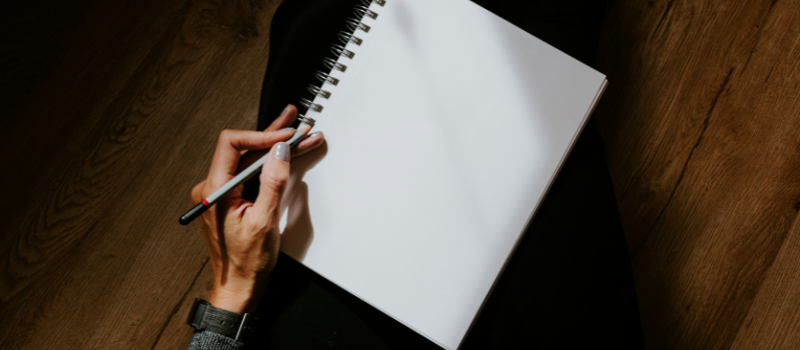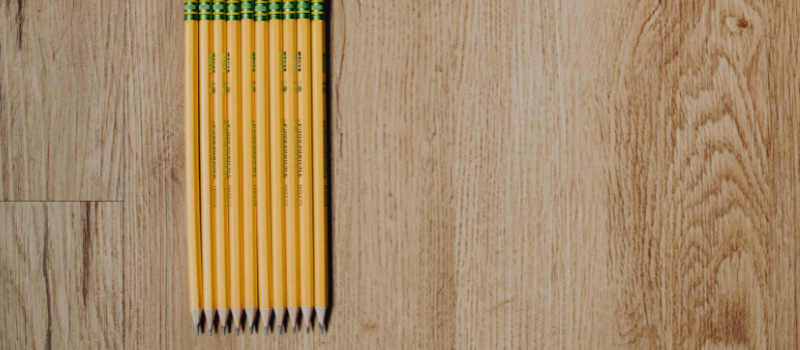You've been studying wrong your entire life.
Well, maybe. Unless you were practicing active recall.
Not your fault, though. Nobody ever taught you that highlighting is basically useless, re-reading is a waste of time, and most study methods are just clever ways to trick yourself into thinking you're learning.
The traditional study method goes a little like this: You read something, it feels familiar, and you think you know it. Who can blame you? Then test day arrives and your brain goes blank. Sound familiar?
That's because recognition isn't the same as recall.
Your brain can recognize information it's seen before without actually being able to retrieve it when you need it.
That’s why active recall is different — it’s one of the few study methods that scientists have actually agreed upon for decades.
Instead of passively absorbing information and hoping it sticks, active recall forces your brain to work. You learn something, then test yourself without looking.
No notes, no hints, no safety net.
It's harder, more uncomfortable, and infinitely more effective than anything you've tried before.
What Is Active Recall?

Active recall is a study method where you deliberately attempt to retrieve information from memory without looking at your notes, textbook, or other reference materials. You actively test your ability to remember and reproduce what you've learned.
It’s the difference between recognizing someone's face in a crowd versus remembering their name from scratch. Your brain uses completely different processes for these tasks, and only one of them builds lasting, accessible memory.
Most study methods are passive. You read, highlight, summarize, or review material that's right in front of you. Active recall is the opposite: you force your brain to generate information from memory without any cues or prompts.
Passive Learning vs. Active Recall Examples
History Study:
- Passive: Re-reading your notes on the French Revolution
- Active Recall: Closing your notes and writing down everything you remember about the French Revolution
Math Formulas:
- Passive: Highlighting important formulas in your textbook
- Active Recall: Covering the formulas and trying to write them from memory
Vocabulary Learning:
- Passive: Reading through vocabulary definitions
- Active Recall: Looking at the word and trying to recall the definition
Flashcard Review:
- Passive: Reviewing flashcards by reading both sides
- Active Recall: Looking at the question side only and forcing yourself to answer
Chapter Study:
- Passive: Summarizing a chapter you just read
- Active Recall: Closing the book and explaining the chapter out loud
Coding Practice:
- Passive: Watching YouTube videos about coding concepts
- Active Recall: Writing code from scratch without looking at examples
Historical Events:
- Passive: Reading through historical dates and events
- Active Recall: Creating a timeline from memory, then checking for accuracy
Practice Problems:
- Passive: Going through practice problems with the solutions visible
- Active Recall: Attempting practice problems completely on your own first
The word "active" describes what your brain is literally doing. Instead of passively absorbing information, it's actively working to retrieve it. And that work is what makes memories stick.
The Science Behind Active Recall (How It Works)
Active recall is backed by over a century of cognitive science research.
Here's what's actually happening in your brain when you use this method.
Hermann Ebbinghaus (a long, long time ago) found that testing yourself on information improved retention compared to simply re-reading it. But the real breakthrough came later when scientists figured out why:
Your brain has two completely different systems for memory:
- Recognition operates like a search engine. When you see information, your brain scans for "matches" against stored memories. It's fast, easy, and creates the illusion that you know something well. This is what happens when you re-read notes and think "yeah, I got this."
- Recall operates more like a construction project. Your brain has to actively rebuild the information from scattered neural fragments. It's harder, slower, and much more reliable. This is what happens during active recall.
Only recall builds lasting, accessible memories. Recognition just confirms that information exists somewhere in your brain, but it doesn't help you retrieve it when you need it.
- The "testing effect" explains why this works so well. Every time you successfully retrieve information from memory, you strengthen the neural pathway to that information. It's like taking a path through tall grass — the more you walk it, the clearer and more permanent it becomes.
- Brain imaging studies show measurable differences between people who use active recall versus passive review. Active recall creates stronger connections between brain regions and increases activity in areas responsible for memory consolidation.
- The retrieval practice effect is dose-dependent. The more effort your brain has to exert to recall information, the stronger the resulting memory becomes. This is why active recall often feels harder than passive study — the difficulty is the entire point.
Why Active Recall Works So Dang Well

Here's why the active recall study method crushes everything else you've tried:
- Forces effortful retrieval (and difficulty is the point). When you struggle to remember something, your brain treats it as important information worth preserving. Easy recognition doesn't trigger this response. Your brain basically thinks: "If I had to work to get this information, it must be valuable."
- Strengthens neural pathways through actual use. Every time you successfully recall information, you're literally strengthening the physical connections between brain cells.
- Finds knowledge gaps immediately. Passive review lets you fool yourself into thinking you know something when you don't. Active recall is brutally honest. If you can't recall it, you don't actually know it yet.
- Builds genuine confidence in what you know. When you can recall information from memory without any prompts, you know you actually own that knowledge. This confidence translates to better performance under pressure (like during exams or real-world applications).
- Creates memories that are actually accessible. Passive study might help you recognize correct answers, but active recall guarantees you can generate answers when you need them. There's a huge difference between "that looks familiar" and "I can explain this."
- Amplifies the benefits. When you combine active recall with spaced repetition, the effects compound exponentially. Each successful retrieval not only strengthens the memory but also extends how long you'll remember it.
- Transfers better to new situations. Information learned through active recall is more flexible and adaptable. These aren’t just facts. You're building understanding that can be applied in brand-new contexts.
Active Recall vs. Other Study Methods
Most of the popular study methods are simply comfort food for your brain. They feel productive but can’t deliver. Active recall feels harder because it actually is harder — and that's exactly why it works. Here’s how active recall stacks up against other study methods:
- Active recall vs. re-reading: Re-reading creates familiarity. You recognize information you've seen before and mistake that recognition for knowledge. Active recall forces actual retrieval, building memories you can access later.
- Active recall vs. highlighting: Highlighting is basically expensive procrastination. You're not processing information really…you're just making it colorful. Active recall makes you engage with the content instead of passively marking it up.
- Active recall vs. summarizing: Summarizing helps with initial understanding but doesn't build retrieval strength. You're still looking at the source material while you work. Active recall removes the safety net and forces your brain to work harder.
- Active recall vs. flashcards: Flashcards can be active recall done right, but most people use them wrong. If you're flipping cards over too quickly or just recognizing answers, you're missing the point. Good flashcards force effortful retrieval. As in, resist the urge to flip it over. Resist.
- Active recall vs. note-taking: Note-taking is useful for capturing information, but reviewing those notes is just passive. Active recall means closing your notes and testing what you remember, then going back to fill gaps.
- Active recall vs. practice problems: Practice problems ARE active recall when done correctly. However, you need to attempt them without looking at solutions or examples first. Most people skip this step and jump straight to checking answers.
Now, we’re not saying other methods aren’t useful. They do have a place. Re-reading for initial exposure, highlighting for marking things to test later, summarizing for understanding complex concepts before testing recall. These methods work best as a setup for active recall, just not replacements for it.
How to Use Active Recall (Step-by-Step)

Active recall sounds simple in theory, but it’s surprisingly easy to mess up. It’s all about being systematic with it instead of just "testing yourself sometimes."
The process is straightforward, but the details matter. How you set up your recall sessions, what types of questions you ask, and how you handle wrong answers makes or breaks your results.
Here's how to do active recall the right way:
- The Basic Setup — Prepare your materials and environment
- Choose Your Recall Method — Pick the right type for your content
- Execute the Retrieval — Actually test yourself (no cheating)
- Check and Correct — Compare with source material
- Schedule Your Reviews — Plan when to test again
- Track Your Progress — Monitor what's working
1. The Basic Setup
First, study your material normally to get initial exposure. You can't recall something you've never learned. Spend time reading, understanding, and processing the information before you try to retrieve it from memory.
Then, put away all your source materials. Close the textbook, hide your notes, turn off your phone, and remove any potential cues. Force your brain to work without any help or hints.
How to do it: Study a section of material for understanding first. Then close everything and grab a blank piece of paper or open a blank document. Set a timer for 10-15 minutes. You're now ready to test what you actually remember versus what you think you remember.
2. Choose Your Recall Method
Different types of content need different recall approaches.
- Free recall means writing down everything you remember about a topic without any prompts. This works well for broad concepts, historical events, or chapter overviews.
- Cued recall uses specific questions or prompts to test particular details. This works better for facts, formulas, or vocabulary.
- Recognition testing involves creating multiple choice questions for yourself, but this should be your last resort since it's the easiest form of recall.
How to do it: For conceptual material, start with free recall: "Write everything you remember about photosynthesis." For factual material, use cued recall: "What's the formula for calculating compound interest?" For complex topics, combine both: start with free recall, then use specific questions to test details you missed.
3. Execute the Retrieval
This is where most people cheat — don't be most people.
Resist the urge to peek at your notes when you get stuck. The struggle is the entire point. When you can't remember something, sit with that discomfort for at least 30 seconds before giving up. Often, the information will surface if you give your brain time to search for it.
Write down everything you can remember, even if you're not 100% sure it's correct. Include partial information, educated guesses, and anything that feels relevant. Don't worry about perfect organization or complete sentences. This is about retrieval, not presentation.
How to do it: Set a minimum time limit (5-10 minutes) and don't stop until you've exhausted your memory. When you think you're done, ask yourself: "What else do I remember?" Push for one more detail, one more connection, one more piece of information.
4. Check and Correct
Go through your recalled information and check it against your source material. Mark what you got right, what you got wrong, and what you missed entirely. Pay special attention to the gaps: these are your priority areas for future study.
Don't just note mistakes, though — understand why you made them. Did you confuse similar concepts? Forget an important detail? Mix up the order of events? Learning your error patterns helps you study better moving forward.
How to do it: Use different colors or symbols to mark correct, incorrect, and missing information. Create a separate list of what you need to review more. For anything you got wrong, write out the correct information by hand to strengthen the memory trace.
5. Schedule Your Reviews
Don't just test once and move on. Schedule follow-up recall sessions using spaced repetition principles: test again after 1 day, then 3 days, then 1 week.
Material you struggled with needs more frequent testing, while information you recalled easily can have longer intervals.
Keep a simple tracking system for what needs to be reviewed when. This can be as basic as writing dates next to topics in a notebook or as fancy as using spaced repetition software.
How to do it: Create a review schedule immediately after each recall session. Write down when you'll test this material again. Set reminders or calendar appointments.
6. Track Your Progress
Keep track of how much you're able to recall each time you test yourself. Note which types of material you recall easily and which consistently give you trouble.
Use this data to adjust your study approach. If you're consistently missing details, focus more on fact-based recall. If you can remember facts but struggle with big picture understanding, focus on free recall of broad concepts.
How to do it: Create a simple log with the date, topic, and rough percentage of what you recalled correctly. Log any patterns you observe. Celebrate improvements, even small ones.
Start Using Active Recall (the Right Way) Today
You've learned the science, seen the comparisons, and gotten the step-by-step process. Now comes the part that separates the learners from the learners-in-theory-only.
Pick one thing you're currently studying. Just one. Maybe it's a chapter you read yesterday, a set of vocabulary words, or concepts from last week's lecture.
Do a 10-minute active recall session right now. Seriously, right now. Close this article, grab a blank piece of paper, and write down everything you remember about your chosen topic. No peeking. No "let me just check one thing." Just you, your memory, and the blank page.
Scary, I know, but that’s what leads to real results.
If active recall feels easy, you're probably doing it wrong. The struggle is the signal that your brain is working. Don't give up when you hit a mental wall — that's exactly when the magic happens.
Start small but be consistent. Ten minutes of active recall daily beats two hours once a week. Your brain builds memory through repetition and consistency.
Now, be honest. How much could you recall without looking? Don't worry about perfect accuracy. That’s not what matters. Instead, focus on building the habit of retrieval first, refinement second.
The difference between people who know about active recall and people who benefit from it is action. The method only works if you actually use it.
.png)


